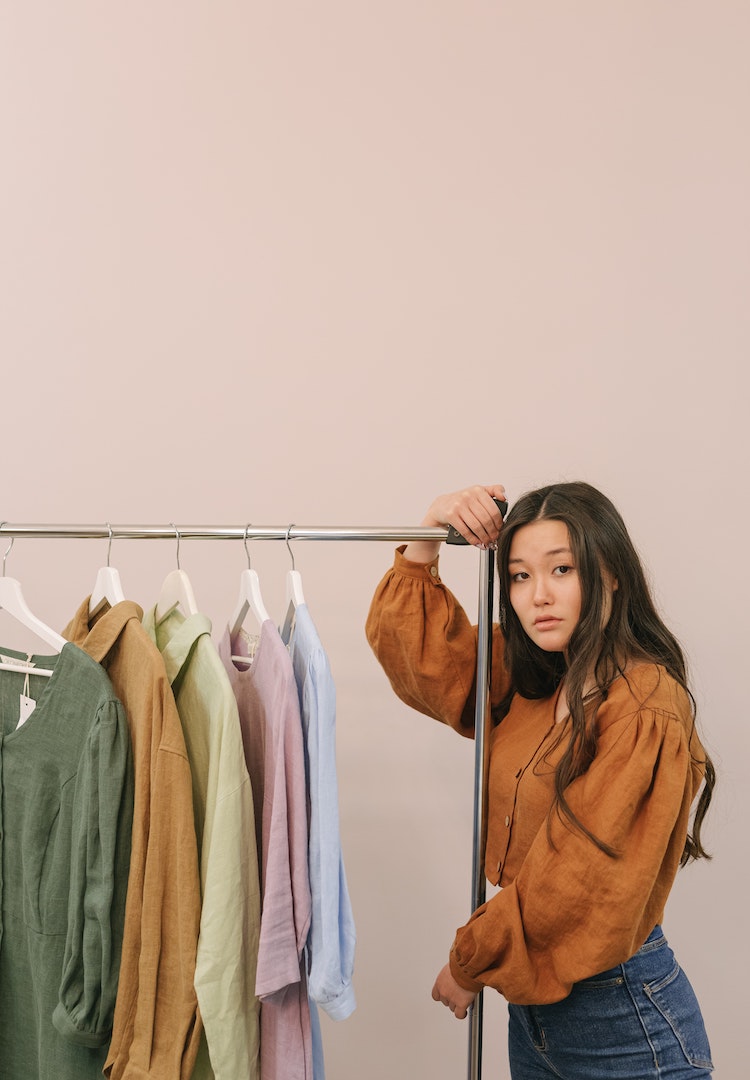Why you should stop dressing for others, according to a stylist
WORDS BY ELLY SHINKFIELD
“When you have a clear sense of your own identity, you’ll be less influenced by external factors.”
I grew up in a small town where almost everyone wore the same thing: activewear. While I didn’t mind wearing activewear to exercise, I failed to see how I could express myself through a pair of simple black leggings.
Yet there I was in my local mall, a fresh-faced 15-year-old purchasing a pair of black leggings and a puffer jacket just to fit in with the people I was surrounded by. The thought of wearing something different and being labelled as ‘weird’ terrified me, so I followed the crowd.
For more style inspiration, head to our Fashion section.
Ironically, trying to fit in sartorially by eschewing the pieces and styles I was naturally drawn to actually made me feel more self-conscious. It’s hard to feel confident when you don’t feel like your most authentic self. It wasn’t until I moved to a bigger city that I finally found the confidence to start dressing for myself, and once I did I wished I’d done it much sooner.
I know how difficult it can be to break the societal mould and wear something that doesn’t fit the ‘uniform’ of those around you. In search of some practical advice for anyone struggling to dress for themselves, I reached out to Brooke Brandt, an Australian Stylist and Creative Director. Below, she shares how to stop dressing for others and tips for cultivating your own sense of style.
How does clothing affect us?
“Clothing and style can evoke a wide range of emotions. Wearing clothing that we associate with positive experiences or memories can uplift our mood and increase feelings of happiness and confidence. Wearing clothing that makes us feel attractive, stylish or confident can enhance our self-image and promote positive self-talk,” Brooke tells me.
The phenomenon of enclothed cognition, a psychological theory that posits that clothes have the power to impact our mood, backs Brooke up here. Brooke emphasises the wide variety of feelings clothing can evoke, and the way it can serve “as a positive force… fostering creativity, self-expression, social connection and personal growth”.
I know this firsthand. Once I finally started dressing for myself, instead of trying to fit in with my peers, I experienced significant benefits to my daily life – a massive boost in my self-esteem and confidence and an overwhelming sense of freedom, to name a few.
Finding your sense of style
“I still think there’s a weird pressure to fit in and feel accepted within the fashion scene, particularly here in Melbourne. It’s a way of showing off and getting approval from friends and even strangers that follow us, particularly in the online space,” Brooke tells me.
When it comes to moving away from the crowd and cultivating a sense of style that feels true to you, she points to secondhand shopping and expanding the type of media you consume as useful starting points.
“I’m all about the thrill of op shopping and soaking up inspiration from various media outlets. Whether I’m rummaging through op shop racks or flipping through magazines, watching music videos or reading blog posts, I’m constantly on the lookout for fresh ideas to spice up my style.
“It’s not just about finding cool clothes; it’s about the stories behind them and the vibes they bring. Each discovery adds a new layer to my unique look, and I love how mixing vintage finds with modern trends creates something totally ‘me’,” she says.
The more you play around with different pieces and influences, the easier it will be to determine what you’re naturally drawn to. From there, it’s all about refining and curating your wardrobe so it becomes a more accurate representation of what you want your style to be.
How to start dressing for yourself
When I ask Brooke for her best practical tips for people who want to stop dressing for others, she breaks it down into three components. The first is ‘Know yourself’. “Take the time to understand your personal style, preferences and what makes you feel confident and comfortable. When you have a clear sense of your own identity, you’ll be less influenced by external factors,” she explains.
Next is ‘Be bold’, which is about embracing “the uniqueness of your individuality and letting your clothing choices reflect that”. Finally, there’s ‘Seek inspiration’. “Look for inspiration from all different sources such as fashion blogs, magazines, social media, art and culture. Draw inspiration from a variety of sources to develop a style that is uniquely yours,” she says.
Final thoughts
While it can be helpful to draw inspiration from others when you’re first starting to cultivate your personal style, it’s important to make sure you’re not just mimicking someone else. Brooke tells me that the “worst thing that you could do is pretend to be someone you’re not, just to fit someone else’s standards”. Cultivating a sense of style that feels authentic to you takes time but, as I know firsthand, the outcome is worth it.
For more on finding your sense of style, head here.













